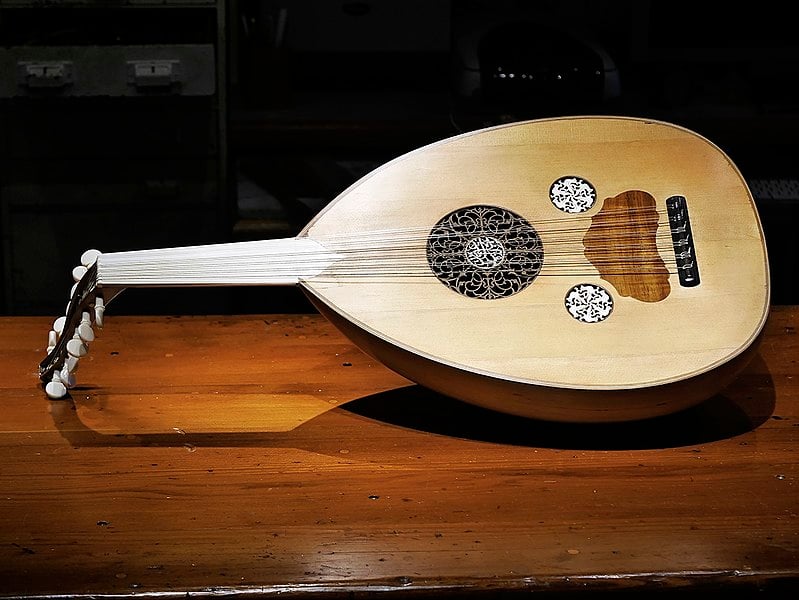
It was Ziryâb, a pupil of Ishâq al-Mawsilî and a fine lutenist as well as a major musician, who endowed the ‘ud with a fifth string and replaced the traditional wooden plectrum with an eagle’s feather, still in use nowadays. the ‘ud had four strings, which, according to the Arab theorists, corresponded to the four “humours”. onwards) before certain musicians such as Ishâq al-Mawsilî or theorists such as Al-Kindî work on its form and bring it to its final shape. But we need to move further forward in time to the Arab golden age and the caliphs of the Abasid kingdom (8th c. The ‘ud in its present form began to emerge in the 6th c. Al-Kindî (11th c.), Al-Farâbî (10th c.) and Al-Urmawî (13th c.) all described the Arabic modal system with the help of this instrument, and many others have done so too.

In Arab music it is considered to be the “king of all instruments” – it is the instrument of predilection in classical music and has served as the basis for all musical theory as well as the Arabic modal system. It is a fretless instrument, with plucked strings and a pear-shaped sound-box. ‘Ud, which means wood or a stick in Arabic, is the name given to the short-necked lute. In Egypt we have records of its appearance during the New Empire (1580-1090 B.C., from the XVth to the XVIIth dynasty). This was a long-necked lute, later to become the favourite instrument of the Babylonians, who introduced it into their prayer rituals and used it as an instrument of communication between man and the divinities.

It probably made its first appearance in Mesopotamia, in the Akadian kingdom (2350-2170 B.C.). But his playing is always strong, generously warm-hearted, flery and romantic, a true reflection of his virtuosic talent.Ĩ – Hiwâr bayn al-Mutanabbi was-Sayyâb – 7’41Īrcheological discoveries attribute the origins of the lute to the end of the third millenium.

Shamma, imbued with the centuries-old tradition of al-Farâbî, an illustrious philosopher who drew up a theory of musical harmony, sometimes treats his lute like a guitar. From his fingerings spring forth melodies that evoke the four elements, one by one - their wildness and fury, the anguish and worry they provoke, the serenity when they die down, the stillness and their beauty that bring consolation and joy… Each tune here is not only part of the invitation to set off on a journey from Baghdad to Grenada, it appeals to our imagination and allows us to escape into the world of poetry and dreams… Naseer Shamma brings an almost human dimension to his lute.


 0 kommentar(er)
0 kommentar(er)
